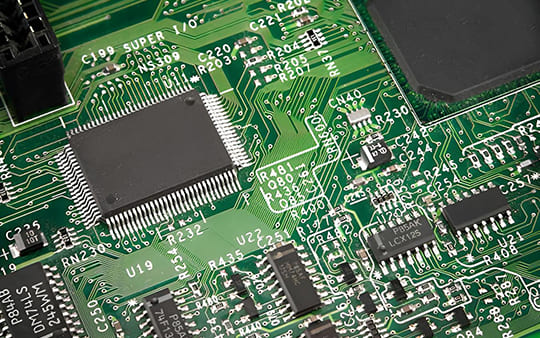
Preventing ESD Damage in SMT | 7 Benefits of Humidification (Part 1)


With the colder season comes an increase of concerns about static electricity in production sites. This shouldn’t be taken lightly as a little static can turn into more than just a disruption in your production process, but a fire hazard for your site. Here, Ikeuchi presents a solution: Dry Fog Humidification.
Production sites are much more sensitive to static electricity than us humans. For example, just a small level of static electricity, less than 1 KV to be exact, has a potential for a chain effect of serious issues and damages. Below, we’ve compiled some examples of these issues across various industries.

To put it simply, we’ve divided the main factors into three categories:
Charges by objects rubbing against each other
Charges by separating (or peeling) an object from contact surface
Charges an object without direct contact; Conductor and object have opposite polarities- i.e., charged particle approaches neutrally charged particle, thus charging the previously neutral object
The best measures to take within a production site to prevent static electricity is humidification control. In finding the most suitable humidity level for a site, we distinguish between two different terms:
Relative humidity refers to the actual percentage of humidity, while absolute humidity refers to the amount of water contained in the air. It is said that a relative humidity of 50% or higher will countermeasure against static electricity. However, relative humidity of 50% doesn’t guarantee this as the amount of moisture/water contained in the air (absolute humidity) can vary drastically depending on the temperature. In some cases, the relative humidity is 40% and able to prevent static electricity, or the relative humidity is 60% and cannot work to countermeasure static electricity because a fluctuation in temperature is not accounted for. The table below shows the versatility of “Relative Humidity 50%” in different temperatures.

The major takeaway here is, in order to accurately countermeasure against static electricity, we must correlate temperature and relative humidity to find the absolute humidity.
It is no secret to production site managers that the way to prevent static electricity is humidification, and conventionally, steam humidification has been the go-to. While this poses as a solution to raising humidity, it unfortunately creates several new issues: threat of wetting equipment/materials, too much heat in the facility thus creating a need for cooling, and excessive energy consumption. This is where the alternative of a water spray humidification system was presented as this provides both cooling and humidification, and uses only 20% of the energy previously needed in steam humidifiers. Unfortunately, there were some complications that came with this as well; the issue of water drops was still there, and nozzle clogging.

The “Fog Engineers” of Ikeuchi took to creating a solution that does it all with the ultimate dry fog humidification system. AKIMist® E produces a mist so fine that the water particles stay intact, in other words it is a “dry” fog. This mist mimics the fog found in nature and the fineness of the water does not cause clogging in the nozzle. Additionally, this mist is cooling and energy efficient. Most important of all, this is a total humidification system that allows you to control humidity to the desired level with the installation of a sensor to the control panel.

Access the Ikeuchi USA LinkedIn Newsletter Article Here: Preventing Static Electricity with Humidification
